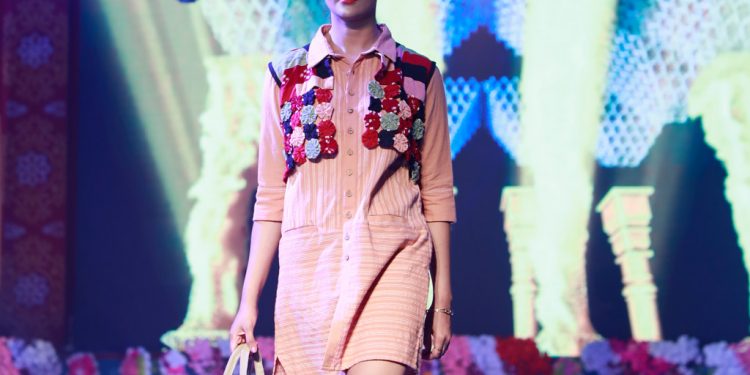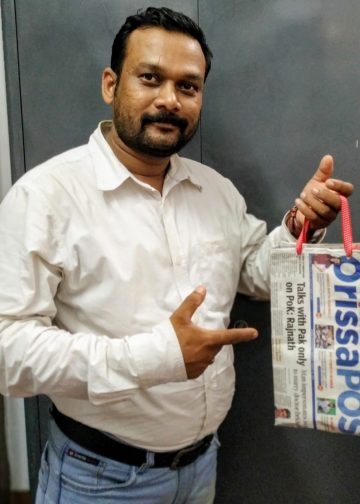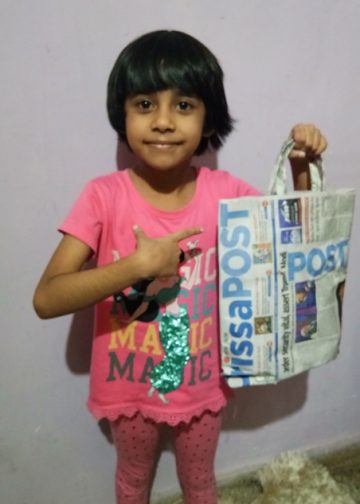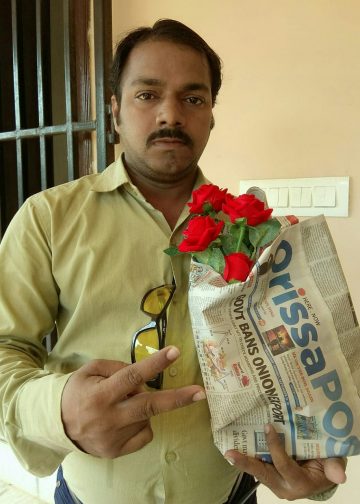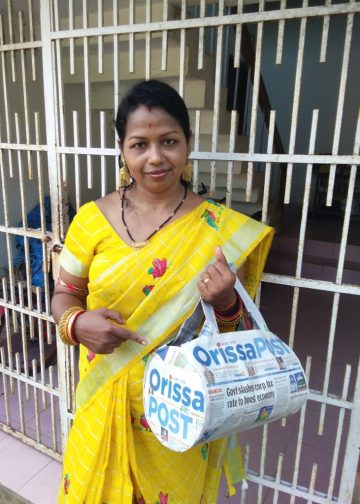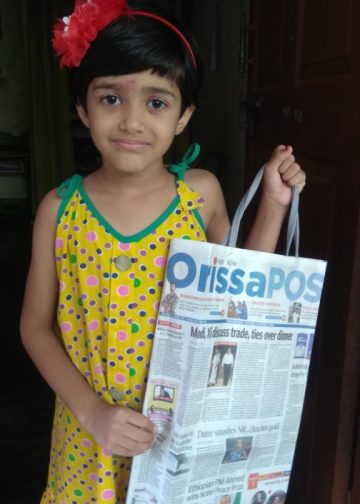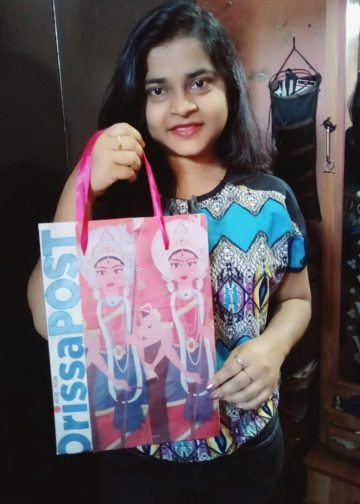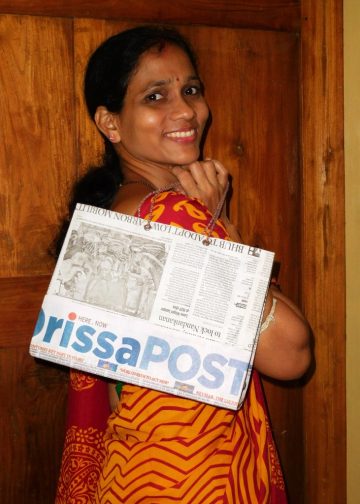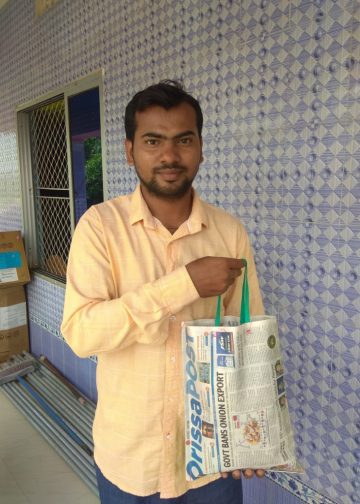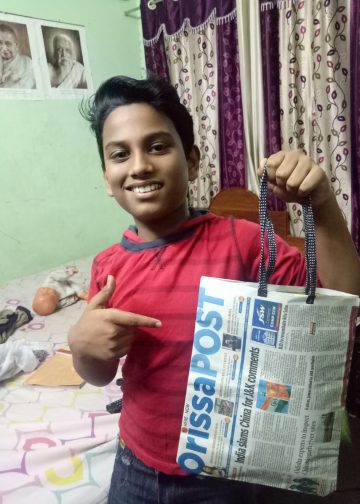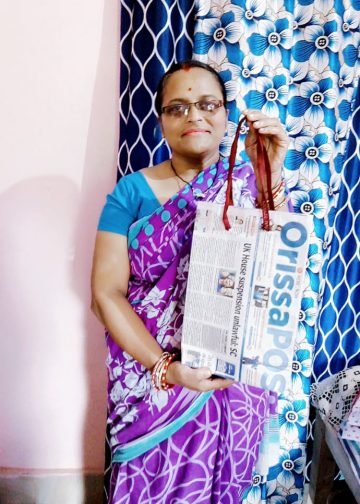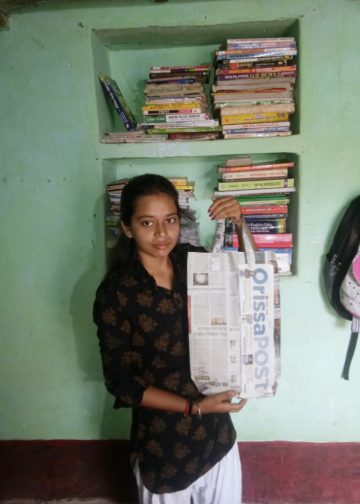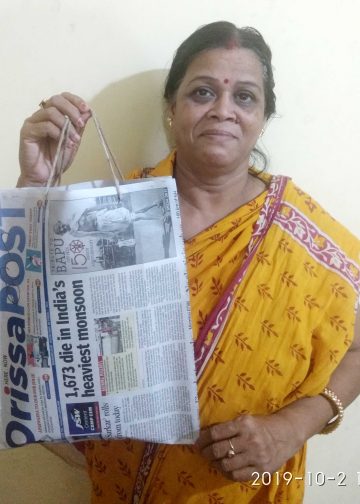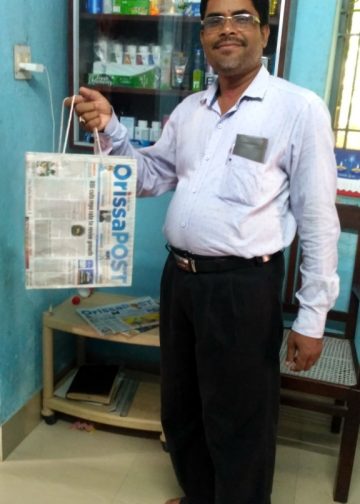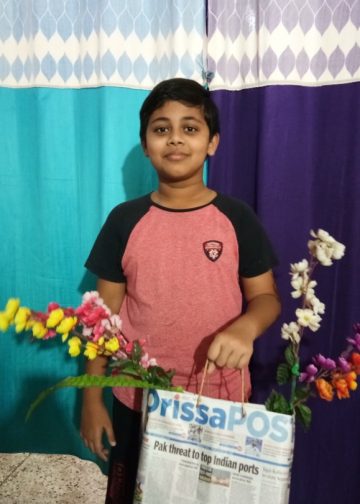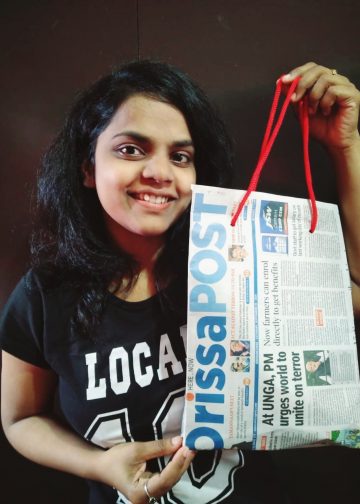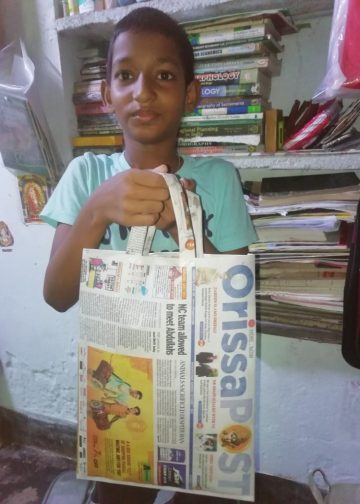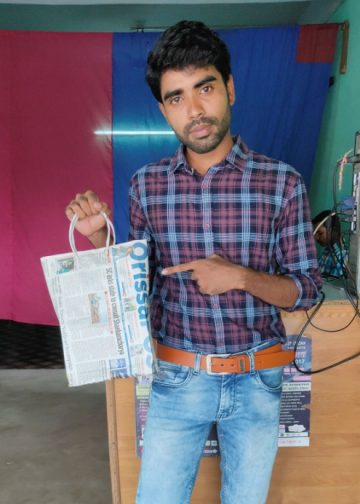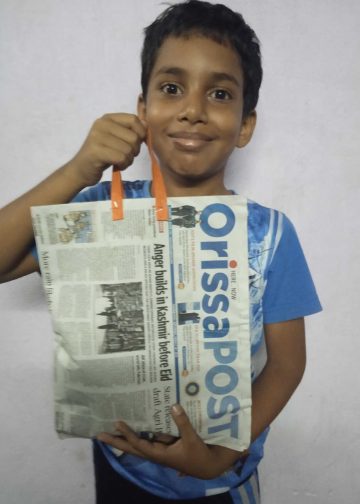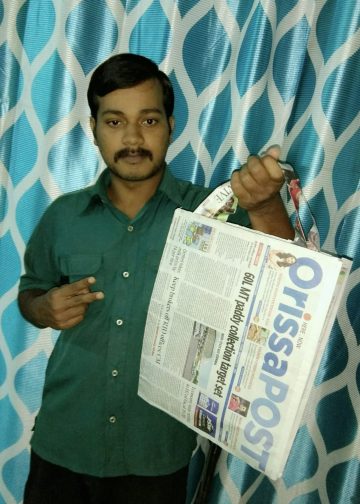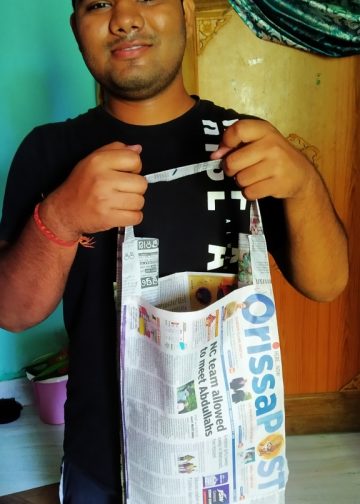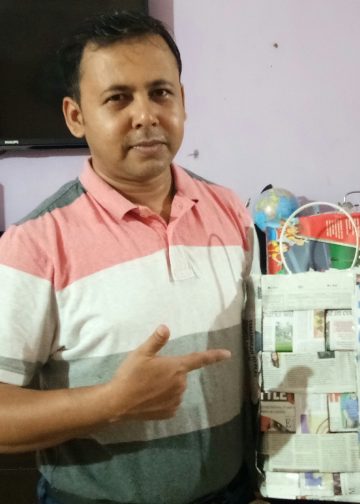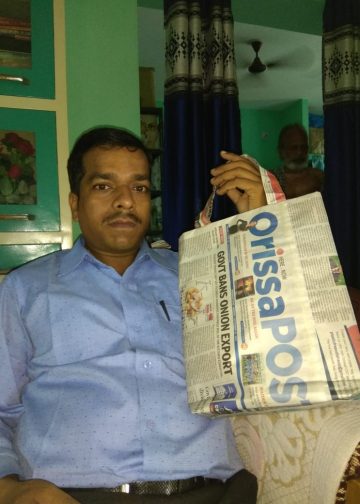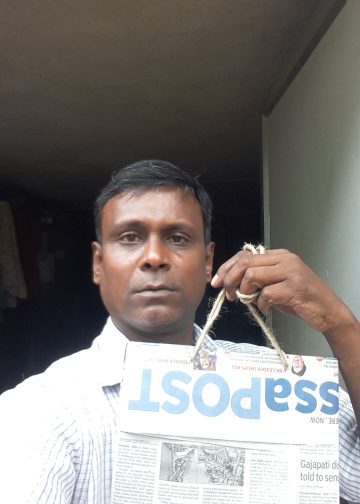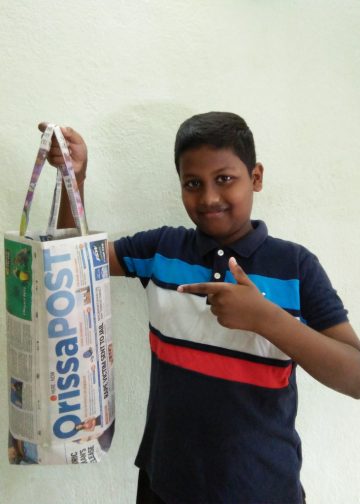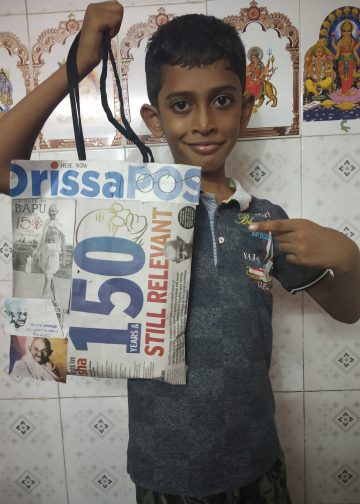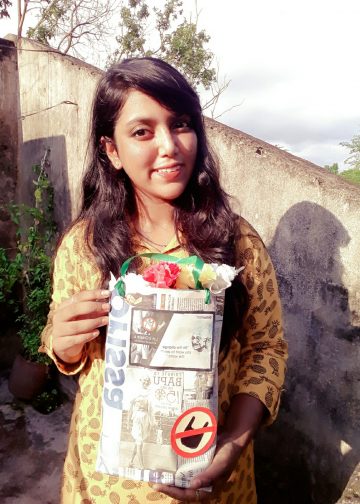Keeping up with the spirit of eco-friendliness and entrepreneurial zeal, two pupils of National Institute of Fashion Technology, Bhubaneswar have started creating eye-catching clothes ‘from scraps and textile wastes’
The label is synonymous with sustainability, zero-waste and handmade. Being environment conscious, we follow ‘Zero-Waste’ policy
- Swikruti Pradhan
Recycling is the need of the hour and we are doing our bit to be a part of this movement. We make fabric yardages out of every bit of leftovers and then make garments out of it. This way we are maximising the use of these precious handmade products and minimising wastages
.Lipsa Hembram
BHUBANESWAR: The 21st century has been witnessing some of the greatest acknowledgements, for instance: mankind has learnt and accepted that indeed it is the homo sapiens who are responsible for climate change and environmental pollution.
Keeping up with the spirit of eco-friendly approach and entrepreneurial spirit, two pupils of National Institute of Fashion Technology, Bhubaneswar have started creating eye-catching clothes ‘from scraps and textile wastes’.
Orissa POST interacted with these two designers who are creating waves in the fashion world, meet— Swikruti Pradhan and Lipsa Hembram. Swikruti’s latest creations were showcased in Toshali National Crafts Mela, in association with Boyanika, at Bhubaneswar.
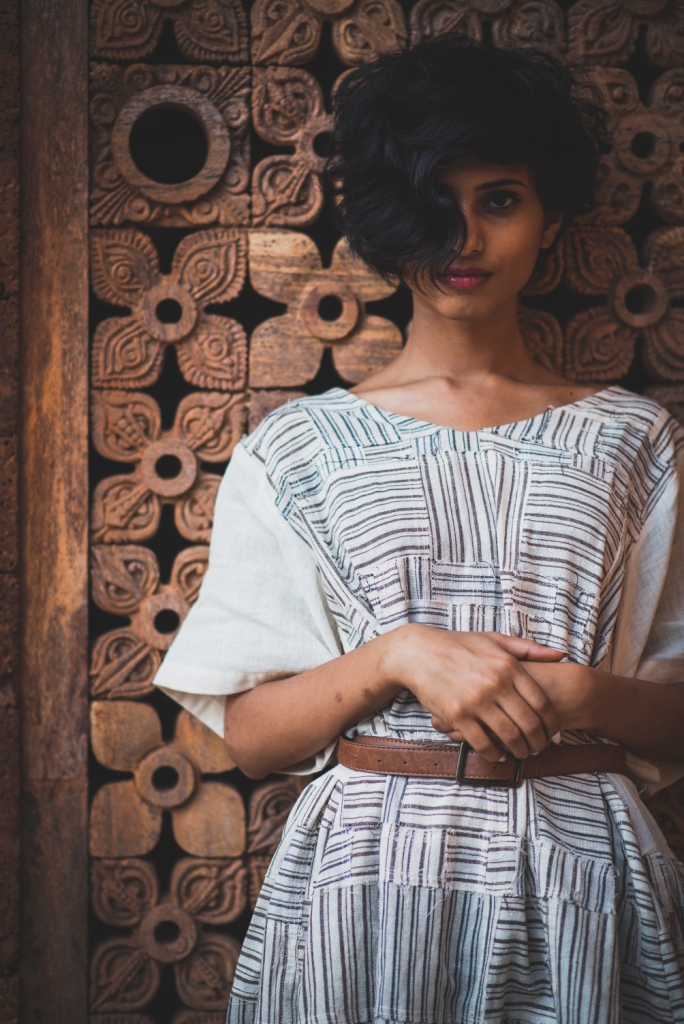
Swikruti’s clothing line Rustic Hue Jugaad’s brand ambassador is none other than actress Anubha Sourya.Rustic Hue, the research-based design label, is a combination of two words with ‘Rustic’ referring to countryside and ‘Hue’ means colour. The label is an amalgamation of rural flavours and unusual colours to create contemporary clothing, which are hand-woven and handcrafted. The label’s soul is connected to the roots of our villages. Being conscious about the surroundings, after each garment is made, the scraps of materials are collected, up-cycled and used to create something new and interesting under the line Rustic Hue Jugaad. The label works with handloom weavers at different villages in Western Odisha to develop own handwoven textiles and then contemporary women’s and men’s ready-to-wear outfits are designed and developed at the studio located in Bhubaneswar. Currently, it is banking on traditional hand weaving techniques like Sambalpuri Ikat (yarn tie and dye), Bomkai (Jala and Jacquard), Doria (extra weft) and Three Shuttle weaving.
“The label is synonymous with sustainability, zero-waste and handmade,” highlighted Swikruti. Being environment conscious, we follow ‘Zero-Waste’ policy, she added.Hence, she ensures maximum utilisation of fabrics by up-cycling/re-using post-production fabrics at their workshop into some or other functional product like accessories or garments.
“These creations are a part of our ‘Rustic Hue Jugaad’ line where every piece is unique and you can’t get the same piece again. It’s another line of ‘Rustic Hue’ ensures zero-waste with various up-cycled products such as chokers, neck-pieces, jackets, tops, created out of post-production fabrics. We are not only using the leftover fabrics at the studio, but also developing garment collections using hand-woven textiles by motivating the weavers to reuse and up-cycle leftover or damaged yarns after the production on loom. The weavers are also being motivated and encouraged to be environment conscious and practice waste management,” she said.
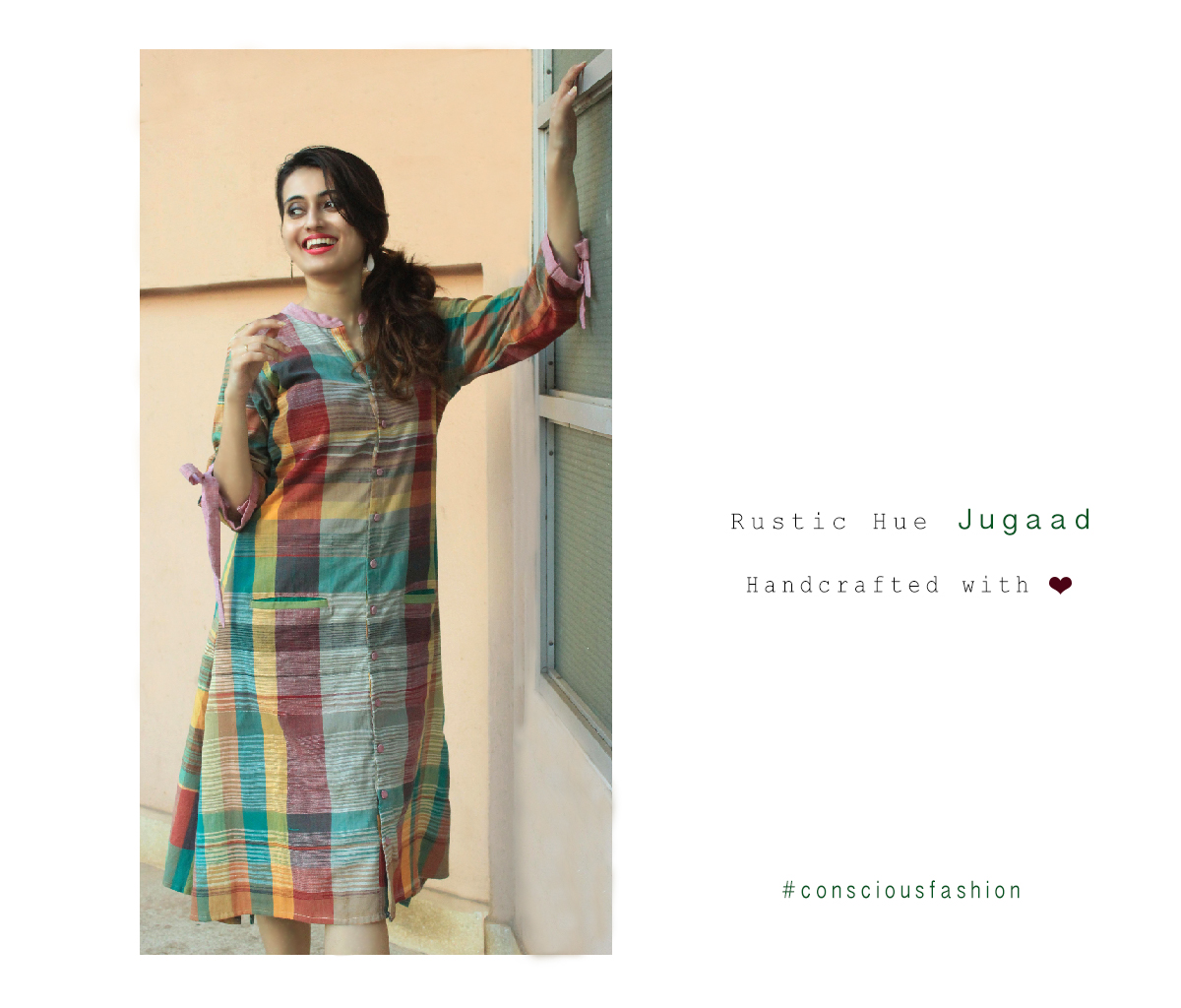
Similarly, designer Lipsa, through her brand Galang Gabaan, is rendering magic to her creations made from textile wastes from her own studio. “Recycling is the need of the hour and we are doing our bit to be a part of this movement. Apart from doing limited editions and capsule collections only, in support of sustainable fashion lifestyle, we tend to reuse our waste. We make fabric yardages out of every bit of leftovers and then make garments out of it. This way we are maximising the use of these precious handmade products and minimising wastages,” said Lipsa.
Since the production of the fabrics and innovations in the textile designs in Kotpad fabric is low, every season is a challenge for her to offer something new to the patrons.“We enjoy this challenge and also are coming up with ideas to have more production so as to benefit the weavers and dyers and make this tribal textile accessible to a wider range of people. Last, but not the least, we are also trying to bring the Santal/Phuta sarees into the mainstream market in a contemporary essence, but not while losing its roots,” said Lipsa.
“This in turn will make people aware of the rich cultural context of the Santal tribe in Odisha,” she added.The brand, Galang Gabaan in Santali loosely means- ‘to create something with love’. Galang Gabaan is an assortment of ideas, a range of smart wear for women.Taking inspirations from daily lifestyle, high fashion trends and with a creative eye, Shilpi is creating a ready to wear collection of ensembles and separates, promoting textiles and handicrafts from Odisha. “This is an effort to bring the culture to the forefront in a contemporary essence.” “Each piece created is a work of passion and is created keeping in mind an individual aesthetic,” she concluded.
CHAITALI SHOME, OP

